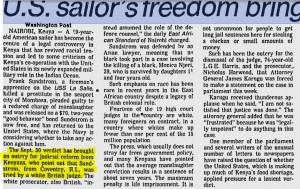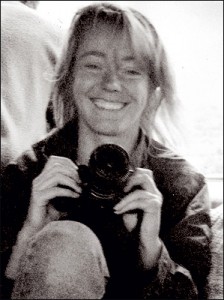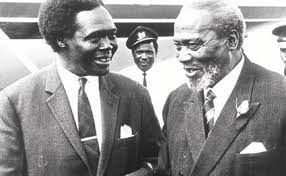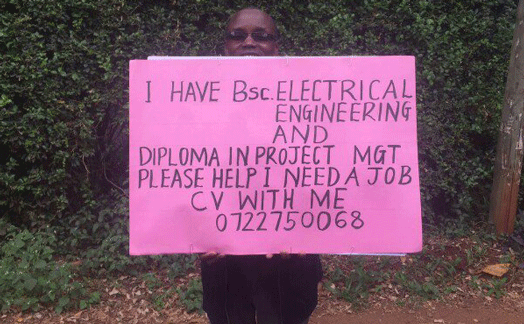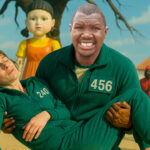Unsolved murders mean that out there, a murderer who walks free. Sometimes, the murderers walk free because the system is rigged in their favor.
This list focuses on seven murders of young women in Kenya, including a tantalizing story of foreign spies who were made in Kenya. Two of these entries are solved, or at least the murderers are known.
7. Mercy Keino
What promised to be a night of fun and debauchery on June 17th, 2011 for Mercy Keino ended tragically. Her disfigured body was found on Waiyaki Way the next morning. Her head was smashed in and she had multiple fractures and bruises. At 6:30 pm the day before, Mercy and her cousin had arrived at Wasini Apartments on Church Road, Westlands. A resident, Maurice Mihango, was hosting a high-profile house party that included among others, then Juja MP William Kabogo.
Mercy, a light drinker, unwisely settled on a wine and whisky cocktail. As the alcohol kicked in, she became rowdy, broke glasses, and disturbed the party. She was ejected from the party but stormed in, this time incurring the wrath of the politician. He slapped her, and then she was carried outside by his bodyguards. When she was ejected again, she ran away towards Waiyaki Way. That is the last time anyone ever saw her alive.
She died sometime after that, most likely after being hit by a car on the busy highway. At the ensuing public inquest, one witness claimed he had seen a lady waving down cars at roughly the same spot Mercy’s body was later found. She could have staggered onto the road right in front of a speeding car. Injured or dead, she would then have been run over by several other cars.
A second theory, which roped in William Kabogo, suggested that she might have been killed elsewhere and her body then dumped on the road. One of the first policemen on the site noted the absence of a blood trail that would support the first theory. Another witness said she had seen a Mercedes stop and drop off a human body. The public inquest ended without any solid conclusions.
6. Monica Njeri
1980 promised to be a good year for the flesh business in Mombasa. Kenya and the US had recently signed a deal that allowed the docking of American ships on Kenyan waters. The flocking of thousands of randy sailors on liberty meant it was time for Monica Njeri, a mother of two to make a killing.
Njeri’s last client was Frank J. Sundstorm, a 19-year-old American sailor on USS La Salle.
Njeri met Sundstorm at a bar and bargained a fee of $41 (or $23, according to some reports). They then rented a room and got on to the main business of the night. Only one of them left that room alive.
At some point in the night, an unsatisfied Sundstorm tried to take the money he had paid Njeri from her purse. In the ensuing quarrel, he smashed a beer bottle on her head. He then jabbed her repeatedly with a broken bottle.
Alarmed by Njeri’s dying screams, the hotel management called the police. Sundstorm was arrested and charged with murder. In an outrageous deal, he confessed to the lesser charge of manslaughter. The judge, 74-year old Justice LGE Harris, released him on a $70, two-year bond to keep the peace. Sundstorm left the country without ever even paying the fine.
Njeris death sparked off a national outrage. Even worse, it seemed Sundstorm had gotten off easy because he was white. The judge was white, as were thirteen other High Court judges at the time. The prosecutor was also white while the defence lawyer was of Asian origin. The outrage bore nothing though, expect a $16, 860 compensation by the US government to Njeri’s two children aged 8 and 13 at the time.
In a recent case in Rhode Island, a 52-year-old man called Frank Joseph Sundstorm was charged with three counts of second-degree manslaughter for driving the wrong way on a highway. FJ Sundstorm caused an accident that killed three women. It is unclear whether that is the same Sundstorm but (19+33) would be roughly 52 years old today.
#5 Lucy Kabura

The USS America (CV66) aircraft carrier made a five-day port visit to Mombasa (it steamed from Masirah Island) in mid-April, 1983.
Image Source: Wikipedia
Three years after Monica Njeri’s murder, history repeated itself.
On a hot and humid April night in 1983, Lucy Kabura was raped and strangled by an American sailor. The sailor, known only as Tyson, was one of 9, 000 sailors on USS America and other ships that were on liberty in Mombasa at the time. The murder of Lucy Kabura ignited memories of how easily Frank J. Sundstorm had gotten away with murder three years before. The Attorney General, Mathew Guy Muli, arrested the ship and demanded the murderer be delivered. A US sailor called James William Tyson was arrested and charged with Lucy’s murder.
Tyson, a 21-year-old fireman from Riverdale, Maryland, hired criminal lawyer Prem D. Prinja, the same man who had defended Sundstorm. Tyson had indeed been out on the night Lucy Kabura died. In his defence, he claimed that he had begun the night gambling at a local casino. He later had a tryst with a woman at Oceanic Hotel. That woman, he was sure, was not Lucy. Even worse for the case, the medical report claimed Lucy had died at 3:30 am but witness testimonies indicated sometime between 10:00pm and 10:30pm. The blood on the discarded condom was no good either because both Tyson and Lucy had blood group type O blood (This was the time before DNA was invented as a forensic method).
When Tyson heard the inevitable ‘not guilty‘ verdict, he broke into a hearty laugh and then shouted from the dock “This is fine. I never did it.” Lucy Kabura’s murder remains unsolved, and the trails have since grown cold.
4. Careen Chepchumba
On the morning of St. Valentine’s Day 2012, Careen Chepchumba’s brother used his key to access her apartment at Santonia Court, off Kirichwa Road. She had been incommunicado since February 12th. In the bedroom, he saw her in bed, tidily covered with a bed sheet. There was music playing from a laptop placed on the bedside table. Nothing looked amiss. Except that Careen had been dead for 18 hours.
Careen, a 26-year-old engineer and employee of Kenya Power, had not reported to work at 8am February 13th. Instead, she called a colleague and said she would be in by 11 am. But she never made it. Someone raped or had consensual sex with Careen between 8 am and 12 noon of February 13th. He then strangled her before covering her up neatly and walking out undetected.
There was a handwritten note on the table that read: “I wish they would let me do my way. Even if we were not together, you are still in my heart. You will still remain so dear to me Louis.”
The only Louis known in Careen’s life was Louis Otieno, a celebrity broadcast news presenter. Careen and Louis met when the latter moved into moved to the ground floor flat at Rose Park apartments in Kilimani in 2011. Her family claimed the two began dating shortly after, and Louis started extorting money from Careen to fund his lavish lifestyle. Hosea Kili, Chepchumba’s father, often repeated that Careen had incurred debts amounting to KShs. 3 million to fund her new relationship. The day before her death, she had gone to her family and asked for help. Her father agreed to pay, and Careen’s brother took her home at 9pm.
Louis said their’s had been a close friendship but not a sexual one. During the investigations, he readily gave samples of his DNA and biological evidence for comparison. He implied that Careen’s father was overbearing and that she often alluded to physical and sexual abuse at home.
Louis Otieno was never formally charged and Careen’s murder remains an open case. The suspicion, however, ruined Louis career and life. Late last year, reports emerged that he had become a chronic alcoholic.
3.?Julie Ward
John Ward found his daughter, Julie, dismembered remains in the thickets of Maasai Mara game reserve on September 13th, 1988. Julie had been missing since 6th September when she left Mara Serena Lodge to continue with her photography safari. What first looked like a murder mystery quickly became a fruitless three-decade push for justice.
Julie had gone to the Mara with her friend, Dr. Glen Burns. On an expedition on the day before her disappearance, Julie’s Jeep broke down and the two returned to the Mara Serena Lodge. Burns left that day for Nairobi. The Jeep was repaired on the morning of September 6th and Julie left for the Sand River camp to collect her camping equipment. That was the last time she was ever seen.
Initial reports claimed that the Jeep had broken down again and she had been stranded in the game reserve. She had then been struck by lighting and lions or hyenas chanced upon her and killed her. John Ward dedicated the rest of his life to getting justice for his daughter. To date, John has made more than 200 visits to Kenya and spent the better part of his fortune trying to unearth how his daughter died. There seems to have been an official cover up over Julie’s death that has made the case the subject of controversy and several conspiracy theories.
Three people, all park rangers including the head park warden, were arrested and charged with murder. They were all later acquitted. In this news report, a former intelligence official claims Julie was raped and then killed. Her body was then mutilated to look like she had been mauled by wild animals.
An article allegedly written by John Ward and published in the Nairobi Law Monthly claims that it was the then President Moi’s son, Jonathan Moi, who killed Ward after he raped her. In the story, Moi first met Ward at a hotel in the Mara. He was accompanied by his farm manager and rally navigator, Ibrahim Choge, who would die in a mysterious road accident in June 1998. Jonathan denied the accusation. To this day, the murder of Julie Ward remains unsolved.
#2 The Athi River Murders
On April 8th 1968, villagers of Sofia Village found two female bodies floating in the Athi River. The bodies had been stuffed in a sack and then weighed down with rocks. Sara Massa, a 23-year-old Ugandan policewoman, and Lillian Millie, a 17-year-old Kampala bar hostess, had been dead for a week. They weren’t just any ordinary women, they were spies.?
In 1966, Prime Minister Milton Obote deposed Uganda’s first president, Kabaka Edward Mutesa. The Kabaka and his allies escaped, with a good number of Kabaka Yekka (KY), the deposed president’s political party, activists landing in Nairobi. Obote, in a bid to ensure they were not planning to overthrow him, had his intelligence send spies to infiltrate and collect evidence against the Nairobi group. He sent six people, among them Sara and Millie. The women were tasked with finding witnesses for the plot.
Sara and Lillian were booked at the Princess Hotel in Nairobi’s Tom Mboya Street. They immediately set to work, first locating the parts of Nairobi’s nightlife that the KY operatives frequented. At the famous Starlight Club in Valley Road, Millie met a Ugandan lady called Essey Senvuma. On Monday April 3rd , Millie said she had gotten a call from Senvuma and they had agreed to meet outside Kenya Cinema on Moi Avenue. That was the last time she and Sara were ever seen alive.
Five men were arrested and charged with the murders: Abraham Senkoma, Krenima Mawanda, Daniel Kiwanuka, Andrew Kyeyune, and John Obbo. Senvuma, who became the prosecution witness, said the five Kabaka Yekka supporters had arrived at her house in Eastleigh at 10pm on the night the women died. Obbo handed her a bag which was later found to have belonged to Millie, one of the dead spies.
Of the five, Kiwanuka, Kyeyune and Obbo were found guilty and sentenced to death. They were hanged at Kamiti Prison. Senkoma and Mawanda were acquitted but were arrested outside the court and extradited to Uganda. Two years later, Obote was overthrown by Idi Amin.
#1 Captain Judy Angaine
On March 30th 1978, someone Captain Judy Angaine knew and let in to her house raped and strangled her. He then carried her lifeless body into the bathtub and left the water flowing.
Captain Judy Kambura Angaine lived on No. 64 Ngei Estate, named after a man who would feature in the murder case. She had a son, a thriving military career, a powerful father, and a loving boyfriend. But something had gone wrong.
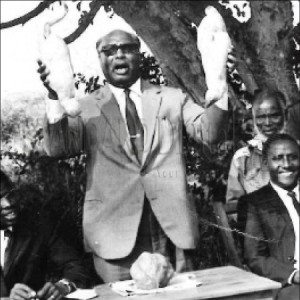
Judy’s father, Jackson Harvester Angaine, was the Minister of Lands and Settlement at the time. Image Source: The Standard
Judy’s father, Jackson Angaine, was the powerful Lands and Settlement Minister at the time. Her boyfriend, David Kisila, was a Major in the military. It was Kisila and Judy’s sister, Joyce, who found her lifeless body at midday on that tragic March afternoon.
Suspicion immediately fell on Kisila. He was promptly arrested and charged with her murder. The hasty investigations ignored a few facts, including the fact that he would have had to have killed then and then gone off to find her sister. In his defense, Kisila said Judy had gone to Molo the day before her murder. She had then gone to Ardhi House to see her father but met another prominent politician, Cooperatives Minister Paul Ngei.
Ngei, ever the Lothario, gave his colleague’s daughter a lift home. Kisila said he found his girlfriend and Ngei drinking whisky at her house. They then left him and went to rave, stopping at Langata Club and Woodley Club. On the way back home, Ngei tried to grope Judy. In the resulting commotion, they fought for the steering wheel and the car rolled. Judy suffered minor injuries and a good Samaritan brought her home.
At 7:30 am the next morning Kisila drove out as Judy’s army driver was parking her car. A worried Kisila returned home and found her condition worse than before. She refused to go to the hospital and according to Kisila, claimed she was waiting for a visitor. He left again, this time to look for Judy’s sisters to help him convince Judy to get proper medical assistance. It was, Joyce Mwari, Judy’s sister, who accompanied Kisila back to the house where they found Judys body.
The postmortem showed that the Judy was killed sometime between 10:30am and 11.00am. There were no signs of forced entry but there was evidence in the bedroom of a physical fight. Whoever had murdered Judy must have suffered some sort of injuries, however minor. Kisila had none on his body.
On November 1st, 1978, the court acquitted Major Kisila of the murder. He was reinstated to his military position and continued his military career, rising up the ranks to Lieutenant Colonel. Captain Judy Angaine’s murder, however, joined the long list of unsolved cases.





